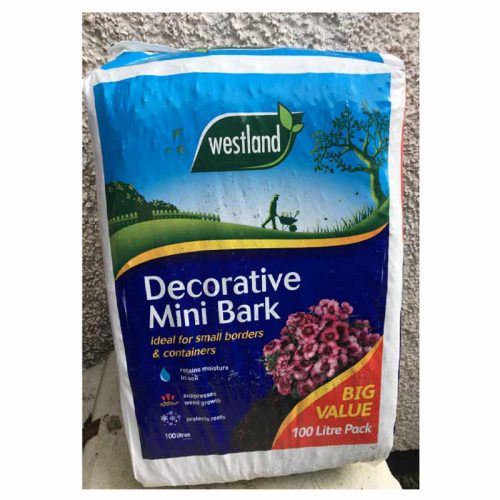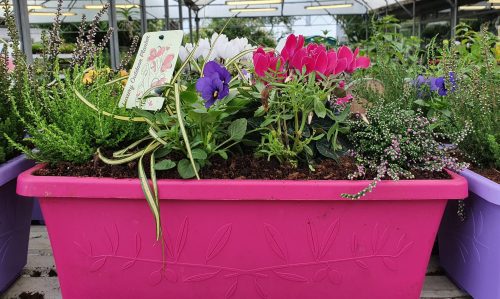- Position: partial shade
- Soil: fertile, well-drained soil
- Rate of growth: slow-growing
- Hardiness: fully hardyA pair of these tightly clipped box spheres look great flanking a set of steps, a doorway or a path. One of our recommended plants, they're perfect for planting in a large terracotta pot in a partially shady site, where the glossy, dark-green leaves provide all year foliage, interest and structure. Box are happy growing in a sunnier spot, but the combination of dry soil and full sun may encourage poor growth and leaf scorching. If you have sandy soil it is best to keep them in a partially shady spot in the garden.
- Garden care: Ensure that the soil or compost is never allowed to dry out. Trim plants grown as hedges or topiary in mid- or late summer. If you want to maintain a really precise outline, then you can clip it twice a year - once in June, and then again in August/September. Apply a top-dressing of a balanced slow-release fertiliser such as blood, fish and bone (organic) or Growmore (inorganic) around the base of the plant in spring, making sure that none touches the leaves or stems.
-
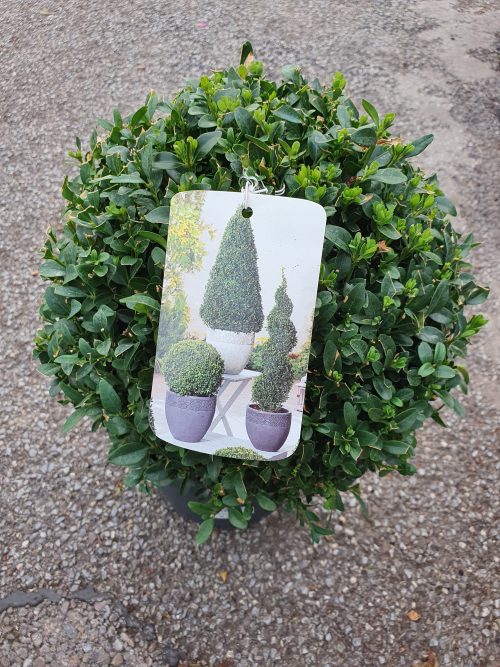
-
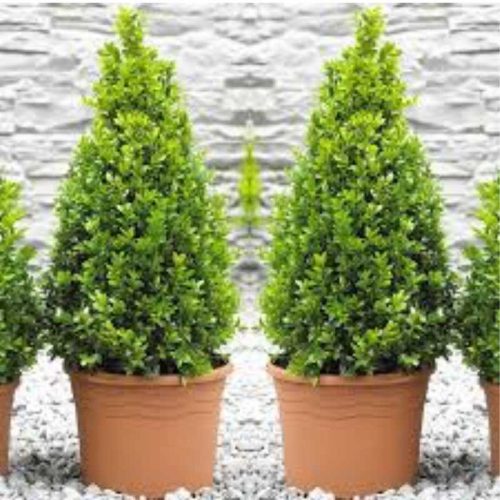
- Position: partial shade
- Soil: fertile, well-drained soil
- Rate of growth: slow-growing
- Hardiness: fully hardyA pair of these tightly clipped box spheres look great flanking a set of steps, a doorway or a path. One of our recommended plants, they're perfect for planting in a large terracotta pot in a partially shady site, where the glossy, dark-green leaves provide all year foliage, interest and structure. Box are happy growing in a sunnier spot, but the combination of dry soil and full sun may encourage poor growth and leaf scorching. If you have sandy soil it is best to keep them in a partially shady spot in the garden.
- Garden care: Ensure that the soil or compost is never allowed to dry out. Trim plants grown as hedges or topiary in mid- or late summer. If you want to maintain a really precise outline, then you can clip it twice a year - once in June, and then again in August/September. Apply a top-dressing of a balanced slow-release fertiliser such as blood, fish and bone (organic) or Growmore (inorganic) around the base of the plant in spring, making sure that none touches the leaves or stems.
-
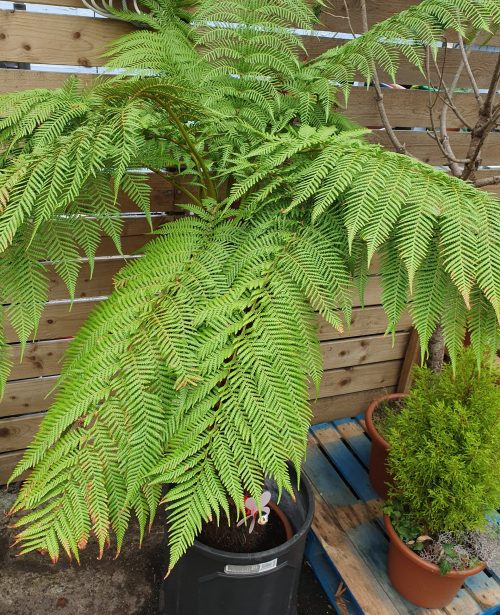
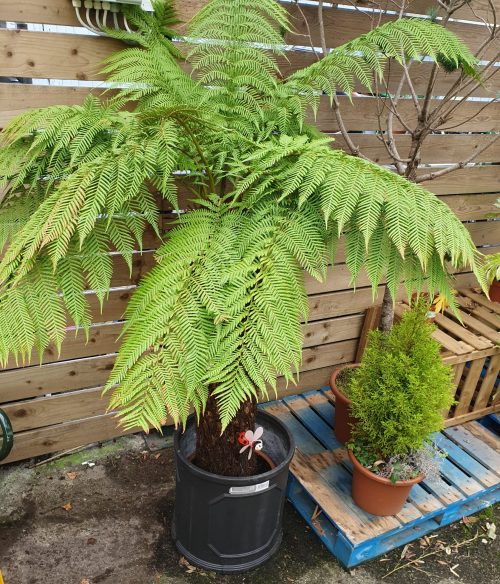 Native to coastal parts of Australia, Dicksonia antarctica is a magnificent, slow-growing, evergreen tree-fern (deciduous in colder areas) and one of the easiest to grow. The brown, fibrous ‘stem’ slowly grows taller, crowned by a rosette of beautiful, glossy, deep green fronds up to three metres long – a wonderfully architectural plant. Winter protection essential in all but the mildest areas – wrap the top of the ‘stem’ in fleece and protect the growing point in the crown with straw or similar insulation, and if pot-grown, bring inside or insulate the pot. Water the stem in hot weather; do not water the crown in winter. Site: Sheltered, sheltered coastal Soils: Moist but well-drained, acid to neutral soil Position: Partial shade or dappled shade Season of interest: Most of the year Hardiness: Frost-hardy Height to 13’ (4m) Spread to 13’ (4m)
Native to coastal parts of Australia, Dicksonia antarctica is a magnificent, slow-growing, evergreen tree-fern (deciduous in colder areas) and one of the easiest to grow. The brown, fibrous ‘stem’ slowly grows taller, crowned by a rosette of beautiful, glossy, deep green fronds up to three metres long – a wonderfully architectural plant. Winter protection essential in all but the mildest areas – wrap the top of the ‘stem’ in fleece and protect the growing point in the crown with straw or similar insulation, and if pot-grown, bring inside or insulate the pot. Water the stem in hot weather; do not water the crown in winter. Site: Sheltered, sheltered coastal Soils: Moist but well-drained, acid to neutral soil Position: Partial shade or dappled shade Season of interest: Most of the year Hardiness: Frost-hardy Height to 13’ (4m) Spread to 13’ (4m) -
 Ideal for use all around the garden this premium compost contains nutrients to feed your plant for up to 5 weeks. The added John Innes formula retains and releases nutrients and water for longer, providing your plants with all they need. It contains our unique ingredient West+ producing our best ever formula.
Ideal for use all around the garden this premium compost contains nutrients to feed your plant for up to 5 weeks. The added John Innes formula retains and releases nutrients and water for longer, providing your plants with all they need. It contains our unique ingredient West+ producing our best ever formula.- Now contains BIO3
- Perfect for all life stages of plants
- Now suitable for seed sowing
- Stronger plant development
- More flowers, more vibrancy, longer plant life
- Ideal for containers and hanging baskets
Why Use
- Feeds plants for up to 5 weeks
- Carefully blended for excellent moisture retention and drainage
- Perfect for all stages of plant life, including seed sowing
- Ideal for containers, hanging baskets and general garden use
- No Green Waste
-
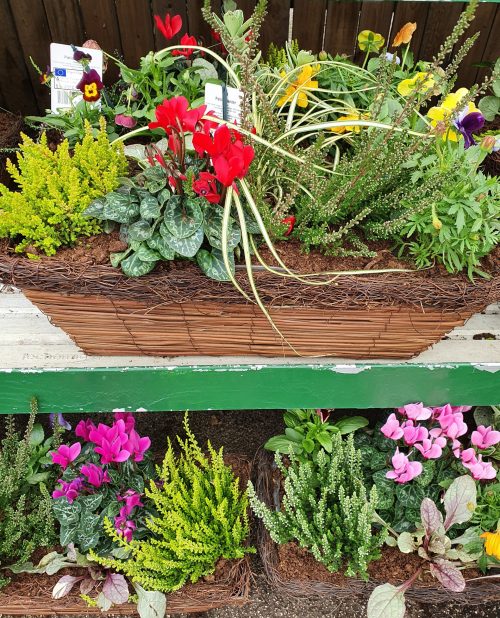
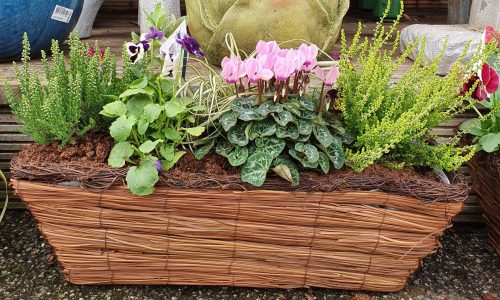 Patio Planter 53cm Window Box Wicker Position: Position planter outside in full natural light.When planted with summer bedding protect from frost. Plant care: Remove dead flower heads regularly to encourage new growth and blooms. Water/Feeding: Water the planter regularly and more frequently in hot or windy conditions.Feed on a regular basis with liquid fertilizer.
Patio Planter 53cm Window Box Wicker Position: Position planter outside in full natural light.When planted with summer bedding protect from frost. Plant care: Remove dead flower heads regularly to encourage new growth and blooms. Water/Feeding: Water the planter regularly and more frequently in hot or windy conditions.Feed on a regular basis with liquid fertilizer. -
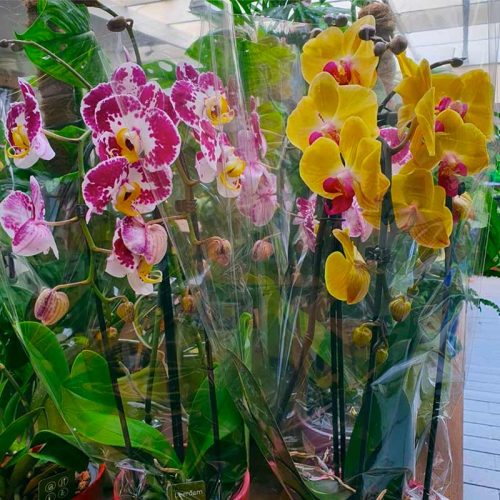
- Position: bright but indirect light
- Soil: these plants do not need to grow in compost, but if potting up, use a specialist orchid compost
- Rate of growth: average
- Hardiness: tender (indoors only)
- Current height: plant approximately 55 cm
- Home care:Keep the compost moist during the warmer months, but in winter you should reduce the amount it gets, and only water them occasionally. Ideally when watering, you should let them stand in a tray of water (or kitchen sink) so they can soak up as much as they like for an hour or two. Afterwards, let the excess water drain away completely. It is always best to give them a a good soak when they get quite dry, rather than watering little and often. Their preference is for soft, tepid water. They love humidity, so a bright kitchen or bathroom would be ideal, and mist the leaves with water occasionally, especially if they are in a heated room. Don't worry if the roots grow outside the pot, in their native environment, they grow in the crooks of branches, and use these aerial roots to absorb water from the air. They do not mind being overcrowded in their pots, so you only need to repot them when the growth starts to suffer. They usually only send up flower spikes once a year, however you may encourage a second flush of flowers to form more quickly if you trim back the stem to just above the first node immediately after they have finished flowering.
-
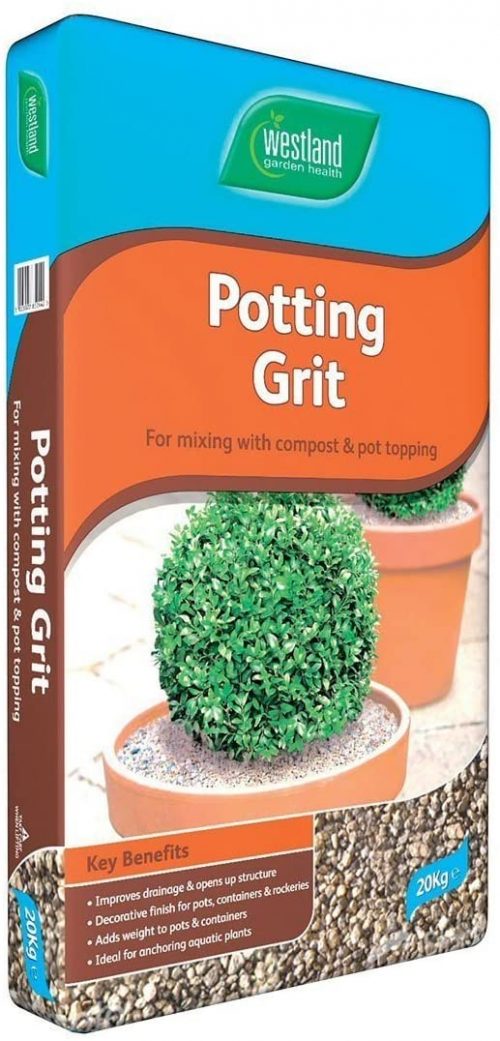 Westland Potting Grit is ideal for mixing with compost to provide extra drainage and open up the compost structure. It’s also great for creating a decorative finish on pots, containers, rockeries, ponds, aquariums and alpine plantings.
Westland Potting Grit is ideal for mixing with compost to provide extra drainage and open up the compost structure. It’s also great for creating a decorative finish on pots, containers, rockeries, ponds, aquariums and alpine plantings.- Washed and graded 4-7mm grit
- Improves drainage & opens up structure
- Decorative finish for pots, containers & rockeries
- Adds weight to pots & containers
- Ideal for anchoring aquatic plants
- 20 kg bag
Why Use
- Westland Potting Grit has been specially sourced and washed to produce a carefully graded, lime-free grit 4-7mm in size, making it perfect for a number of uses around the garden and greenhouse.
-
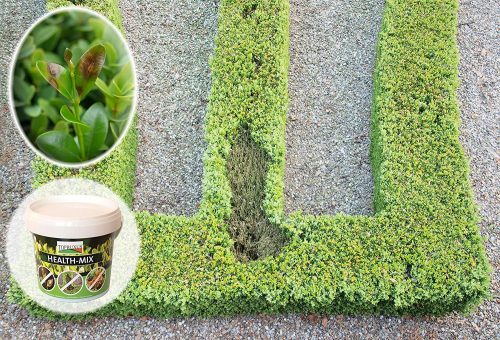
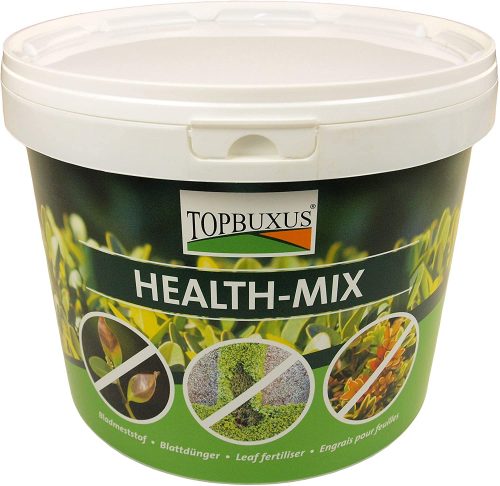 TOP BUXUS HEALTH-MIX can be used in two ways. 1. For bright green shiny leaves and to prevent fungal disease, such as Cylindrocladium With TOPBUXUS HEALTH-MIX, you can give your box plants bright green shiny leaves, preventing yellow edges and faded colours. To achieve this, treat your box plants 3-5 times during the growing season from March to October. This will also make your box plants healthier and stronger, resulting in them becoming more resistant to disease, etc.; this will particularly help to prevent fungal diseases such as Cylindrocladium. 2. To deal immediately with an acute fungal disease such as Cylindrocladium With TOPBUXUS HEALTH-MIX, you are able to immediately stop acute fungal disease such as Cylindrocladium. An acute fungal disease is immediately recognisable from the brown points that will swiftly expand to form blemishes. The most dangerous period is when there is protracted rainfall in combination with high temperatures. If you do nothing, the diseased box plant will soon start to lose its leaves and, in the worst case, if you fail to treat it, the affected branches can die, resulting in dead areas in your box plant. The diseased plants will then unfortunately have to be replaced. However, if you promptly use TOPBUXUS HEALTH-MIX after treatment, leaves will soon sprout on the diseased branches and recover. When the onset of disease is evident, immediately carry out the treatment. Under normal circumstances, one treatment is sufficient. It is extremely important to also immediately treat all of your healthy box plants. Should the warm and damp weather persist, repeat the treatment after 1 week. Thorough inspection is recommended in the future, particularly when the weather is warm and damp for protracted periods of time. If necessary, at a later date, you can simply repeat the treatment; this means you will continue to get maximum pleasure from your box plants. Do not use above 25 degrees Celsius. Only use early in the morning or evening in warm, sunny weather Can be used in damp weather, but preferably for use on dry foliage. If seriously affected with lots of brown spots and shedding leaves, we recommend that you first prune the plants considerably and then treat them straight away with TOPBUXUS HEALTH-MIX, which will encourage rapid regrowth
TOP BUXUS HEALTH-MIX can be used in two ways. 1. For bright green shiny leaves and to prevent fungal disease, such as Cylindrocladium With TOPBUXUS HEALTH-MIX, you can give your box plants bright green shiny leaves, preventing yellow edges and faded colours. To achieve this, treat your box plants 3-5 times during the growing season from March to October. This will also make your box plants healthier and stronger, resulting in them becoming more resistant to disease, etc.; this will particularly help to prevent fungal diseases such as Cylindrocladium. 2. To deal immediately with an acute fungal disease such as Cylindrocladium With TOPBUXUS HEALTH-MIX, you are able to immediately stop acute fungal disease such as Cylindrocladium. An acute fungal disease is immediately recognisable from the brown points that will swiftly expand to form blemishes. The most dangerous period is when there is protracted rainfall in combination with high temperatures. If you do nothing, the diseased box plant will soon start to lose its leaves and, in the worst case, if you fail to treat it, the affected branches can die, resulting in dead areas in your box plant. The diseased plants will then unfortunately have to be replaced. However, if you promptly use TOPBUXUS HEALTH-MIX after treatment, leaves will soon sprout on the diseased branches and recover. When the onset of disease is evident, immediately carry out the treatment. Under normal circumstances, one treatment is sufficient. It is extremely important to also immediately treat all of your healthy box plants. Should the warm and damp weather persist, repeat the treatment after 1 week. Thorough inspection is recommended in the future, particularly when the weather is warm and damp for protracted periods of time. If necessary, at a later date, you can simply repeat the treatment; this means you will continue to get maximum pleasure from your box plants. Do not use above 25 degrees Celsius. Only use early in the morning or evening in warm, sunny weather Can be used in damp weather, but preferably for use on dry foliage. If seriously affected with lots of brown spots and shedding leaves, we recommend that you first prune the plants considerably and then treat them straight away with TOPBUXUS HEALTH-MIX, which will encourage rapid regrowth
